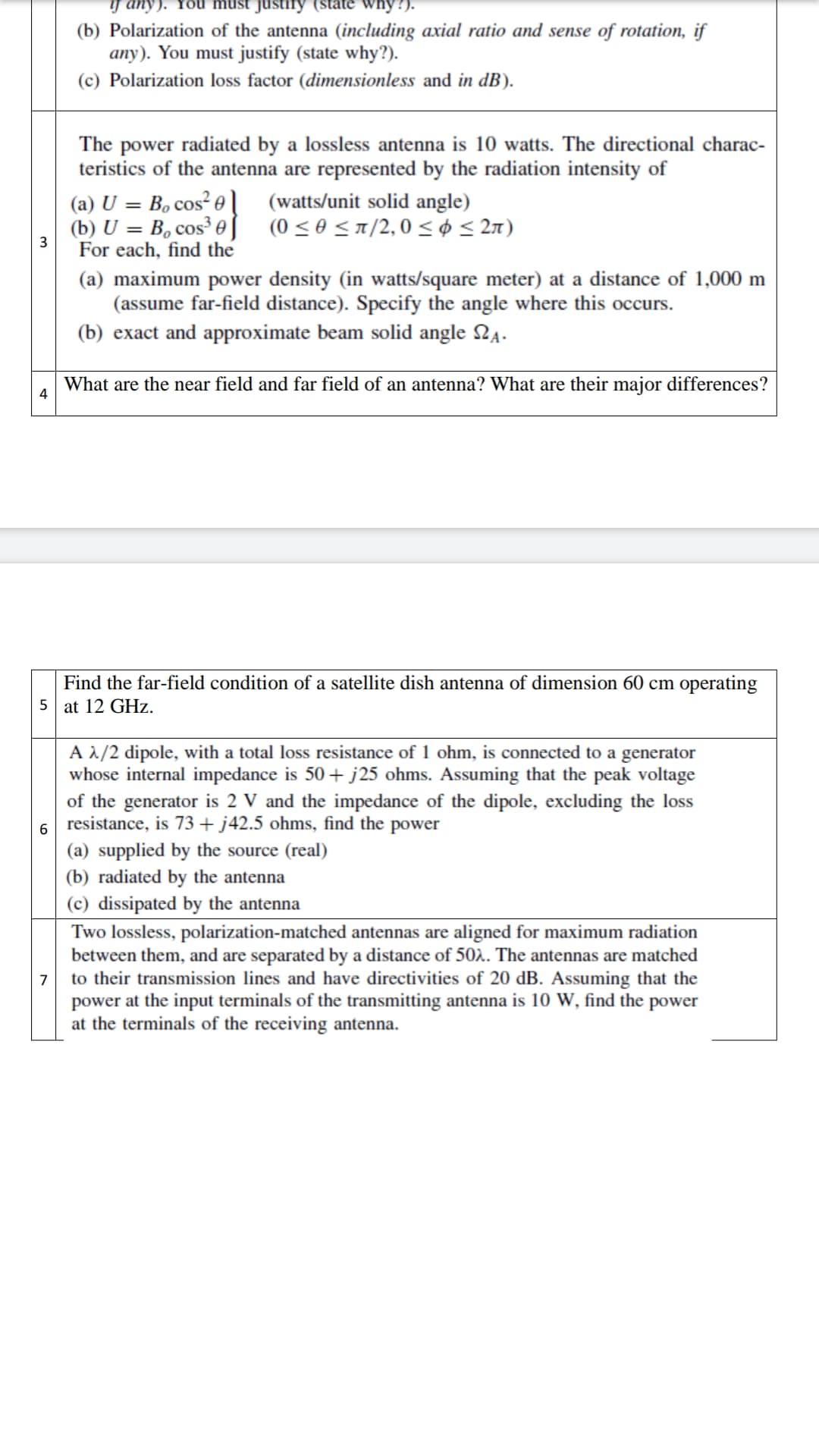(b) Polarization of the antenna (including axial ratio and sense of rotation, if any). You must justify (state why?). (c) Polarization loss factor (dimensionless and in dB). The power radiated by a lossless antenna is 10 watts. The directional charac- teristics of the antenna are represented by the radiation intensity of (a) U = B, cos²01 (watts/unit solid angle) (b) U = B, cos³ e (0 < θ < π/2, 0 < φ = 2π) For each, find the (a) maximum power density (in watts/square meter) at a distance of 1,000 m (assume far-field distance). Specify the angle where this occurs. (b) exact and approximate beam solid angle ₁. What are the near field and far field of an antenna? What are their major differences? 4 Find the far-field condition of a satellite dish antenna of dimension 60 cm operating 5 at 12 GHz. A λ/2 dipole, with a total loss resistance of 1 ohm, is connected to a generator whose internal impedance is 50+ j25 ohms. Assuming that the peak voltage of the generator is 2 V and the impedance of the dipole, excluding the loss 6 resistance, is 73+ j42.5 ohms, find the power (a) supplied by the source (real) (b) radiated by the antenna (c) dissipated by the antenna 7 Two lossless, polarization-matched antennas are aligned for maximum radiation between them, and are separated by a distance of 50%. The antennas are matched to their transmission lines and have directivities of 20 dB. Assuming that the power at the input terminals of the transmitting antenna is 10 W, find the power at the terminals of the receiving antenna. 3
Protection System
A system that protects electrical systems from faults by isolating the problematic part from the remainder of the system, preventing power from being cut from healthy elements, improving system dependability and efficiency is the protection system. Protection devices are the equipment that are utilized to implement the protection system.
Predictive Maintenance System
Predictive maintenance technologies are designed to assist in determining the state of in-service equipment so that maintenance can be scheduled. Predictive maintenance is the application of information; proactive maintenance approaches examine the condition of equipment and anticipate when it should maintain. The purpose of predictive maintenance is to forecast when equipment will fail (depending on a variety of parameters), then prevent the failure through routine and corrective maintenance.Condition monitoring is the continual monitoring of machines during process conditions to maintain optimal machine use, which is necessary for predictive maintenance. There are three types of condition monitoring: online, periodic, and remote. Finally, remote condition monitoring allows the equipment observed from a small place and data supplied for analysis.
Preventive Maintenance System
To maintain the equipment and materials on a regular basis in order to maintain those running conditions and reduce unnecessary shutdowns due to unexpected equipment failure is called Preventive Maintenance (PM).
I need q 7

Step by step
Solved in 2 steps









